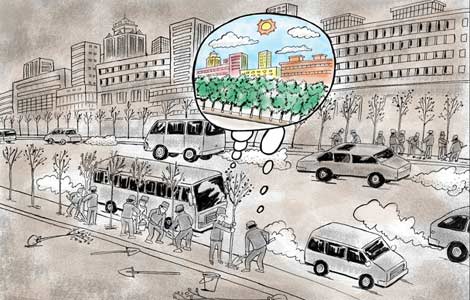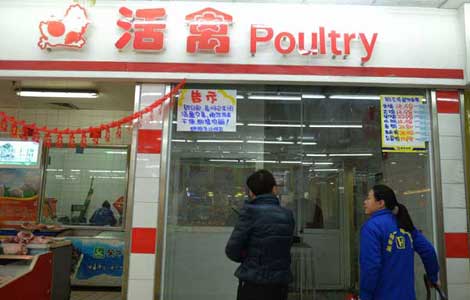Another bumper year 'possible'
Updated: 2014-01-25 03:09
(China Daily)
|
||||||||
Agricultural experts still concerned about contaminated farmland
 |
|
A customer scans a QR code, which shows the origin of rice, at a supermarket in Shenyang, Liaoning province. The country is expected to have another bumper harvest this year thanks to improvements in technology. [Photo/Xinhua] |
China may see another bumper grain harvest this year if the country can enhance scientific input and improve the quality of its cultivated land, the agricultural authority said on Friday.
The country's grain output reached 601.94 million metric tons in 2013, a record high and the 10th consecutive year of increased grain harvests, according to the Ministry of Agriculture.
"Although another grain output increase will be very difficult to realize after consecutive harvests, it is still possible with scientific input and efforts to restore contaminated farmland," Zeng Yande, an official in charge of the planting industry at the ministry, said at a news conference.
For instance, the average grain yield reached 5.35 tons per hectare last year, compared with 4.3 tons in 2003, according to the ministry.
Per hectare grain output is expected to see an increase of 0.2 to 0.3 tons by 2020, when the country renews its crop varieties, he said.
Another way to increase production is to reduce grain loss due to disasters, Zeng said, citing ministry statistics that show total grain loss from various natural disasters, plant diseases and insects has reached more than 50 million tons per year.
The country also plans to cultivate 53.5 million hectares of high-standard farmland by 2020 as a major effort to consolidate its foundation for guaranteeing its agricultural supply. The soil of the farms will be richer in organic content and less contaminated, according to a recent national plan, which was approved by the State Council in November.
But both agricultural officials and experts said that China still faces challenges to maintain grain self-sufficiency if the country fails to take effective measures to tackle soil contamination, which has been mainly caused by heavy metal pollution and excessive use of fertilizers and pesticides.
Results of a soil survey released by the Ministry of Environmental Protection in December found that about 3.33 million hectares of arable land, almost the size of Belgium, were too polluted to grow crops.
Ren Tianzhi, director of the Agro-Environmental Protection Institute under the Ministry of Agriculture, said an investigation into heavy metal pollution of the country's farmland is underway.
"Farmland in China will soon be classified by levels of heavy metal pollution, so guidelines can be set for what can and cannot be grown in certain areas when the investigation is completed," he said, but did not provide a specific timeline.
For instance, the areas with severe heavy metal pollution will be labeled as forbidden for producing certain varieties of edible agricultural products to ensure food safety, he said.
It is estimated that the increasing domestic demand for grain will exceed 5 million tons a year due to rising population and rapid urbanization, according to the ministry of agriculture.
Imports of both soybeans and corn for processing cooking oil, fodder and industrial materials are predicted to moderately increase, Chen Xiwen, deputy chief of the Central Rural Work Leading Group, said on Wednesday.
Grain imports for last year, including rice, wheat and corn, are expected to reach roughly 15 million tons, up from 13.98 million tons in 2012. It is also estimated that the country imported 63 million tons of soybeans last year, he said.
But the amount of imports is small when compared to domestic grain output, Chen said.
Most Viewed
Editor's Picks

|

|

|

|

|

|
Today's Top News
December worst air quality month of 2013
China 'can weather QE challenge'
1 student shot to death on US university campus
Wealthy Chinese eye priciest US home listing
Naval hotline urged to tackle conflict
Abe floats hawkish plan
Regulator 'regrets' US move on audits
Beijing reports H7N9 human case
US Weekly

|

|














